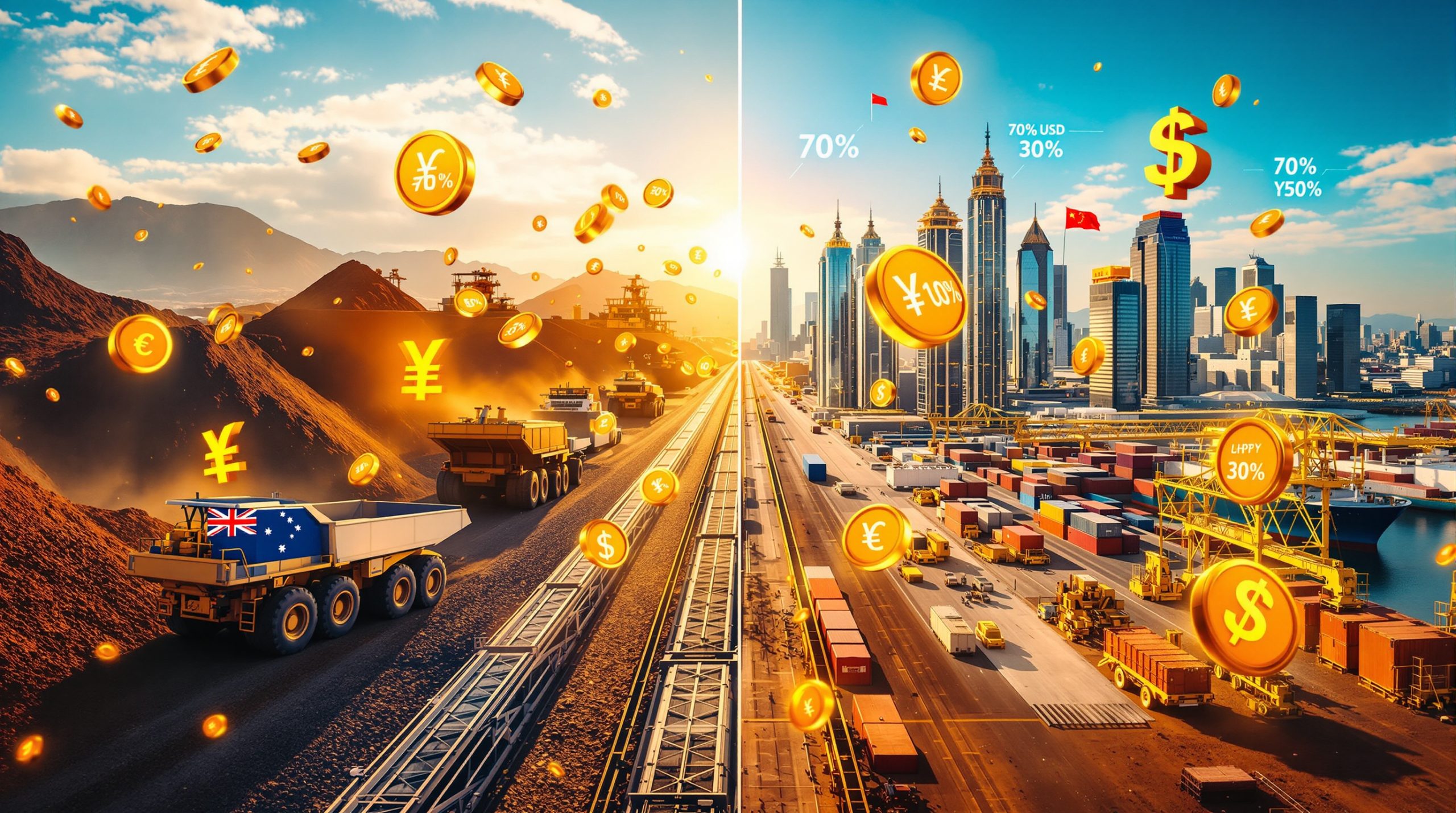What is China's WTO Complaint Against India's EV Subsidies?
Understanding the Core Allegations
China has formally challenged India at the World Trade Organization regarding government incentives for electric vehicle manufacturing and battery cell production. The WTO complaint over India EV subsidies, filed in October 2025, targets India's comprehensive subsidy framework that Beijing claims violates fundamental international trade principles.
The formal challenge specifically alleges that India's electric vehicle incentive programs breach the national treatment clause and constitute prohibited import-substitution subsidies under WTO regulations. These allegations centre on India's requirement that subsidised companies maintain specific levels of domestic manufacturing and component sourcing within Indian borders.
The dispute represents a significant escalation in trade tensions between the two Asian economic powers, with China leveraging multilateral trade rules to challenge India's industrial policy objectives in the rapidly growing electric vehicle sector. Furthermore, this development reflects broader US–China trade impacts on global supply chains.
Key Programs Under Scrutiny
India's contested subsidy schemes encompass two major policy frameworks that have drawn Beijing's attention. The PM E-Drive Programme, launched in 2024, provides comprehensive support for electric vehicle manufacturers across multiple categories including two-wheelers, three-wheelers, passenger vehicles, and commercial electric vehicles.
India's Contested EV Subsidy Schemes
| Program | Launch Year | Coverage | Key Features |
|---|---|---|---|
| PM E-Drive | 2024 | All EV categories | Subsidies linked to domestic manufacturing |
| PLI Scheme | 2020 | Manufacturing-based incentives | Volume and localisation requirements |
The Production Linked Incentive scheme operates on a different model, providing incremental rewards to manufacturers based on domestic production volumes and localisation achievements. Major participants in this program include established automotive players such as Hyundai, Tata Motors, Ola Electric, and Reliance, all of whom have qualified for incentive payments through their Indian manufacturing operations.
Timeline of Events Leading to the Complaint
The WTO complaint over India EV subsidies represents the culmination of growing tensions over India's industrial policy approach to electric vehicle development. China's decision to file formal consultations with India comes at a time when Beijing has simultaneously implemented stringent export restrictions on critical materials essential for electric vehicle production.
Recent developments include China's placement of export controls on heavy rare earth magnets, lithium batteries, cathode materials, and graphite anode components. These restrictions coincide with India's development of domestic alternatives, including a new subsidy scheme for complete magnet production using rare earth oxide materials.
Additionally, these developments align with global concerns about critical minerals and energy transition security, particularly regarding supply chain independence.
How Do India's EV Incentive Programs Actually Work?
PM E-Drive Programme Mechanics
The Prime Minister's E-Drive Programme represents India's latest comprehensive approach to electric vehicle promotion, establishing a framework that connects financial incentives directly to domestic manufacturing requirements. The program covers the entire spectrum of electric mobility, from personal two-wheelers to large commercial vehicles.
Eligible manufacturers receive subsidies and tax benefits contingent upon establishing production facilities within India and meeting specific component sourcing requirements. The program's structure effectively creates a domestic value addition mandate that determines subsidy eligibility and amounts.
Infrastructure development represents another crucial component of the PM E-Drive framework, with incentives provided for charging network expansion and related support systems. These infrastructure subsidies are designed to address range anxiety and accelerate electric vehicle adoption across different market segments.
Production Linked Incentive (PLI) Framework
The PLI scheme operates through a volume-based reward system that directly links financial incentives to domestic manufacturing output and sales performance. Companies receive incremental benefits based on their ability to achieve specific production targets while maintaining required levels of local component sourcing.
Localisation requirements under the PLI framework establish minimum thresholds for domestic value addition, creating clear benchmarks that participating companies must achieve to qualify for incentive payments. These requirements encompass both component manufacturing and assembly operations within Indian territory.
The scheme's beneficiaries represent a diverse mix of domestic and international automotive manufacturers. Major participants include established players like Hyundai and Tata Motors, alongside newer entrants such as Ola Electric, all of whom have successfully navigated the program's qualification criteria through substantial Indian manufacturing investments.
Domestic Value Addition Requirements
India's subsidy programs incorporate specific domestic content requirements that effectively mandate local manufacturing participation for incentive eligibility. These requirements establish measurable criteria for the percentage of vehicle components that must be manufactured within Indian borders.
Critical Policy Element: India's subsidies are available exclusively for vehicles meeting predetermined domestic component thresholds, creating a localisation mandate that China characterises as discriminatory against foreign suppliers.
The domestic value addition criteria extend beyond simple assembly operations to encompass meaningful manufacturing activities, including component production, technology transfer, and supply chain development within India's automotive ecosystem. However, these policies must be viewed within the context of recent battery-grade lithium developments in India.
Which WTO Rules Are Allegedly Being Violated?
National Treatment Principle Violations
China's complaint centres on alleged violations of the national treatment clause, a fundamental WTO principle requiring equal treatment of foreign and domestic products and companies. This principle prohibits discrimination against foreign goods and services in favour of domestic alternatives.
The national treatment obligation requires that imported products receive treatment no less favourable than that accorded to similar domestic products. China argues that India's localisation requirements create inherent discrimination by providing subsidies only to companies meeting domestic manufacturing criteria.
WTO jurisprudence has established that subsidies conditional on domestic content requirements can violate national treatment obligations by creating incentives that favour domestic over imported goods. Such conditional subsidies effectively penalise companies that choose to import components rather than manufacture them domestically.
Import-Substitution Subsidy Concerns
Import-substitution subsidies represent a category of prohibited trade measures under WTO agreements. These subsidies specifically encourage companies to use domestically produced goods or components instead of importing equivalent products from other countries.
China contends that India's incentive programs function as import-substitution subsidies by providing financial benefits contingent upon domestic manufacturing requirements. This structure allegedly creates artificial incentives for companies to source components locally rather than through international trade.
The WTO Agreement on Subsidies and Countervailing Measures specifically prohibits subsidies contingent upon domestic content requirements, viewing such measures as trade-distorting and harmful to international commerce. Consequently, this challenge represents a broader test case for similar policies worldwide.
WTO-Compliant Subsidy Framework Elements
Essential Characteristics of Permissible Subsidies:
- Non-discrimination between foreign and domestic suppliers
- No conditional requirements based on export performance
- Absence of domestic content mandates
- Neutral impact on trade patterns between member countries
- Transparent application criteria available to all eligible participants
Compliant subsidy structures focus on achieving legitimate policy objectives such as environmental protection or industrial development without creating artificial barriers to international trade or discriminating against foreign suppliers.
What Are the Broader Implications for Global EV Markets?
China's Strategic Motivations
Beijing's WTO complaint over India EV subsidies reflects broader strategic concerns about maintaining its dominant position across global electric vehicle supply chains. China currently controls significant portions of critical material processing, component manufacturing, and battery production essential for electric vehicle development worldwide.
The timing of China's complaint coincides with India's accelerated efforts to develop independent electric vehicle manufacturing capabilities and reduce dependence on Chinese suppliers. This strategic competition extends beyond commercial considerations to encompass national security and technological sovereignty concerns.
China's recent implementation of export restrictions on rare earth materials, lithium battery components, cathode materials, and graphite anode supplies demonstrates Beijing's willingness to use supply chain leverage as a geopolitical tool. The WTO complaint represents another dimension of this multifaceted strategic approach.
Impact on India's EV Market Development
India's electric vehicle market remains in early development stages, with penetration rates significantly below those achieved in mature markets such as China, Germany, and the United States. The WTO challenge threatens to disrupt India's policy framework during a critical growth phase.
Current Market Context:
- India's domestic electric vehicle manufacturing capacity requires substantial expansion
- Import dependency for critical components remains high
- Infrastructure development lags behind policy ambitions
- Consumer adoption rates continue to face affordability and range challenges
If the WTO rules against India's programs, the country may face requirements to modify or eliminate key subsidy measures, potentially slowing domestic industry development and affecting foreign investment decisions in the Indian electric vehicle sector. Moreover, this could impact India's lithium strategy for securing supply chains.
Supply Chain Security Considerations
India's push for comprehensive domestic magnet production capabilities using rare earth oxide materials represents a direct response to China's export control measures. This supply chain diversification effort reflects growing recognition of the strategic importance of critical material access.
China's export controls encompass multiple layers of the electric vehicle supply chain, from raw material processing through component manufacturing to final assembly. These restrictions create significant supply chain vulnerabilities for countries dependent on Chinese suppliers.
The competition over critical mineral access and processing capabilities extends beyond bilateral trade concerns to encompass broader questions of technological independence and economic security in the transition to electric mobility. In addition, this reflects similar approaches seen in government critical minerals order initiatives elsewhere.
How Does the WTO Dispute Process Work?
Current Stage: Consultation Phase
China has requested consultations with India as the mandatory first step in the WTO dispute settlement process. This consultation phase provides both countries an opportunity to discuss their positions and potentially resolve the dispute through bilateral negotiations.
The consultation process typically lasts 30 days, during which both parties can present their perspectives on the contested measures and explore potential compromise solutions. If consultations fail to produce a mutually acceptable resolution, either party may request the establishment of a dispute settlement panel.
During this initial phase, India has the opportunity to defend its subsidy programs by demonstrating WTO compliance or offering modifications that address China's concerns while maintaining program effectiveness for domestic industrial development objectives.
Next Steps if Consultations Fail
Should bilateral consultations prove unsuccessful, the dispute would advance to formal panel proceedings under WTO auspices. Panel formation involves the selection of trade law experts who will evaluate evidence and legal arguments from both sides.
The panel phase typically requires 12 to 18 months for completion, during which both countries present detailed legal briefs, supporting evidence, and expert testimony regarding the contested measures. Panel proceedings follow established procedures designed to ensure fair consideration of all relevant factors.
Appeals of panel decisions remain possible through the WTO Appellate Body, though the current dysfunction of this institution may affect the practical availability of appellate review for disputes initiated at this time.
Possible Remedies and Consequences
Potential WTO Outcomes and Timelines
| Scenario | Impact on India | Estimated Timeline |
|---|---|---|
| Negotiated settlement | Modified program terms | 3-6 months |
| Panel ruling against India | Program amendments required | 12-18 months |
| Compliance failure | Trade retaliation authorised | 18+ months |
If the WTO ultimately rules against India's programs, the country would face requirements to bring its measures into compliance with international trade obligations. Failure to implement necessary modifications could result in authorised trade retaliation by China against Indian exports.
What Does This Mean for Other Countries' EV Policies?
Global Precedent Setting
The outcome of China's complaint against India will establish important precedents for electric vehicle subsidy design worldwide. Many countries have implemented or are considering similar domestic content requirements as part of their clean energy transition strategies.
China has previously filed WTO challenges against electric vehicle subsidy programs in multiple jurisdictions, suggesting a coordinated strategy to limit the use of localisation requirements in green technology incentives. The cumulative effect of these challenges may reshape how governments design climate-oriented industrial policies.
The balance between achieving climate objectives and maintaining WTO compliance represents a growing challenge for policymakers worldwide. The India case will provide crucial guidance on permissible approaches to supporting domestic clean energy industries.
Investment and Manufacturing Implications
Foreign companies investing in India's electric vehicle sector face uncertainty regarding the stability and continuity of current incentive programs. Potential WTO-mandated modifications could affect investment returns and strategic planning for multinational manufacturers.
The dispute highlights tensions between national industrial policy objectives and international trade rule compliance. Countries seeking to develop domestic capabilities in strategic sectors must navigate increasingly complex legal frameworks while achieving policy goals.
Manufacturing location decisions may be influenced by the outcome of this dispute, particularly for companies evaluating trade-offs between accessing subsidies and maintaining supply chain flexibility across multiple markets.
Frequently Asked Questions About the WTO Complaint
Why is China Filing This Complaint Now?
The timing of China's WTO complaint over India EV subsidies reflects several converging factors related to India's accelerated electric vehicle policy implementation and broader strategic competition between the two countries. India's recent launch of the PM E-Drive programme represents a significant expansion of government support for domestic electric vehicle manufacturing.
China's global dominance of electric vehicle supply chains provides both economic and strategic advantages that Beijing appears determined to protect. The complaint serves as a tool to challenge policies that could reduce other countries' dependence on Chinese suppliers and manufacturing capabilities.
India's supply chain independence initiatives, particularly in critical material processing and component manufacturing, pose direct competitive challenges to Chinese market positions. The WTO complaint represents one element of a broader response to these strategic threats.
How Long Will the WTO Process Take?
The consultation phase typically spans 30 to 60 days, providing both countries an opportunity to resolve their differences through bilateral negotiations. If consultations fail, panel proceedings generally require 12 to 18 months for completion.
Following any panel ruling, implementation periods may add an additional 6 to 12 months before final compliance requirements take effect. The total dispute resolution timeline could extend beyond two years if appeals or compliance issues arise.
Historical WTO dispute data suggests that complex subsidy cases often require extended timeframes due to the technical nature of the legal and economic issues involved. Furthermore, the complexity increases when considering China's filing of a WTO complaint and its broader implications.
Could India Modify Its Programs to Avoid WTO Violations?
India possesses several potential pathways for restructuring its subsidy programs to achieve WTO compliance while maintaining support for domestic electric vehicle industry development. Modification options include removing explicit domestic content requirements while maintaining other forms of support.
Examples of WTO-compliant subsidy designs include research and development support, infrastructure development incentives, and environmental performance-based rewards that do not discriminate based on supplier nationality or component origin.
The challenge lies in balancing WTO compliance requirements with India's legitimate industrial development objectives and the need to create meaningful incentives for domestic manufacturing investment and capability building. However, according to India's Commerce Ministry, the government is examining the complaint thoroughly.
Conclusion: Navigating Trade Rules in the Green Transition
Key Takeaways for Stakeholders
The WTO complaint over India EV subsidies represents a critical test case for the intersection of international trade law and climate policy implementation. The outcome will influence how governments worldwide design incentive programs for clean energy technologies.
Stakeholders across the electric vehicle ecosystem must recognise the importance of WTO compliance in long-term policy sustainability. Subsidy programs that violate international trade obligations face potential challenges that could disrupt industry planning and investment decisions.
China's strategic use of WTO mechanisms to maintain supply chain dominance demonstrates the complex interplay between trade law and geopolitical competition in critical technology sectors.
Looking Ahead
The consultation outcomes between China and India will provide initial insights into potential resolution pathways and the flexibility available for addressing WTO concerns while maintaining policy effectiveness. Close monitoring of these discussions will be essential for understanding evolving precedents.
Other countries designing green technology subsidies should carefully evaluate their programs for potential WTO compliance issues, particularly regarding domestic content requirements and non-discrimination principles.
The evolution of international trade rules for clean energy transitions remains an ongoing process that will require balancing climate objectives with established trade law principles. The India case represents an important step in defining these boundaries.
This analysis is based on publicly available information and should not be construed as legal advice. Stakeholders should consult qualified trade law experts for specific guidance on WTO compliance matters.
Considering ASX Critical Minerals Investment Opportunities?
Discovery Alert's proprietary Discovery IQ model delivers real-time notifications on significant ASX mineral discoveries, particularly critical minerals essential for battery technology and energy transition infrastructure. With China's WTO complaint highlighting the strategic importance of supply chain independence in the EV sector, explore Discovery Alert's dedicated discoveries page to understand why major mineral discoveries can generate substantial market returns and begin your 30-day free trial today to position yourself ahead of the market.




